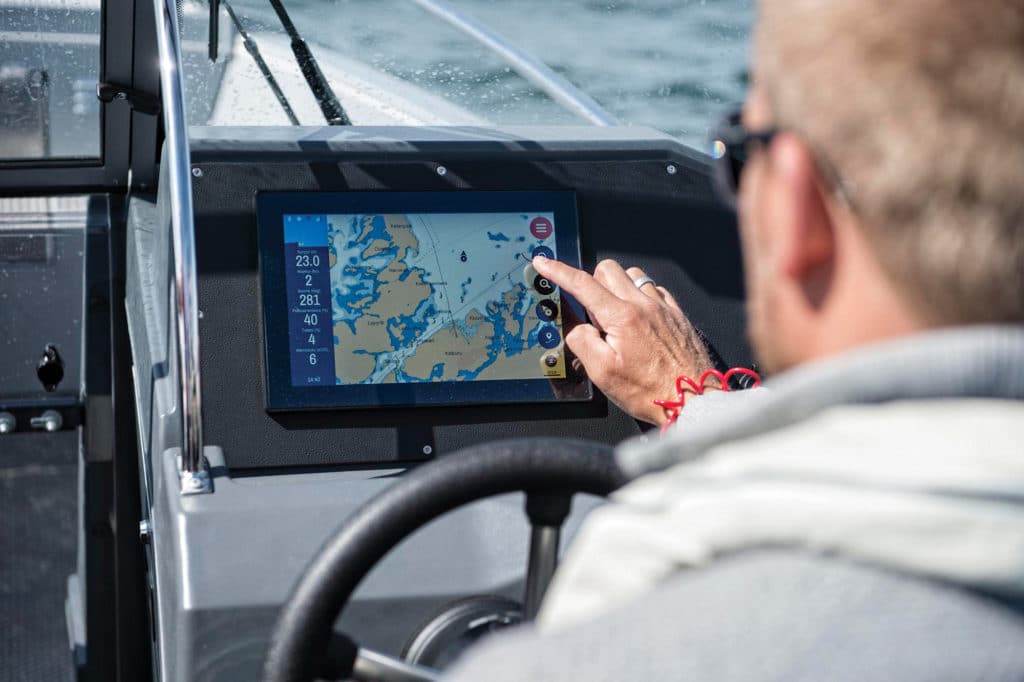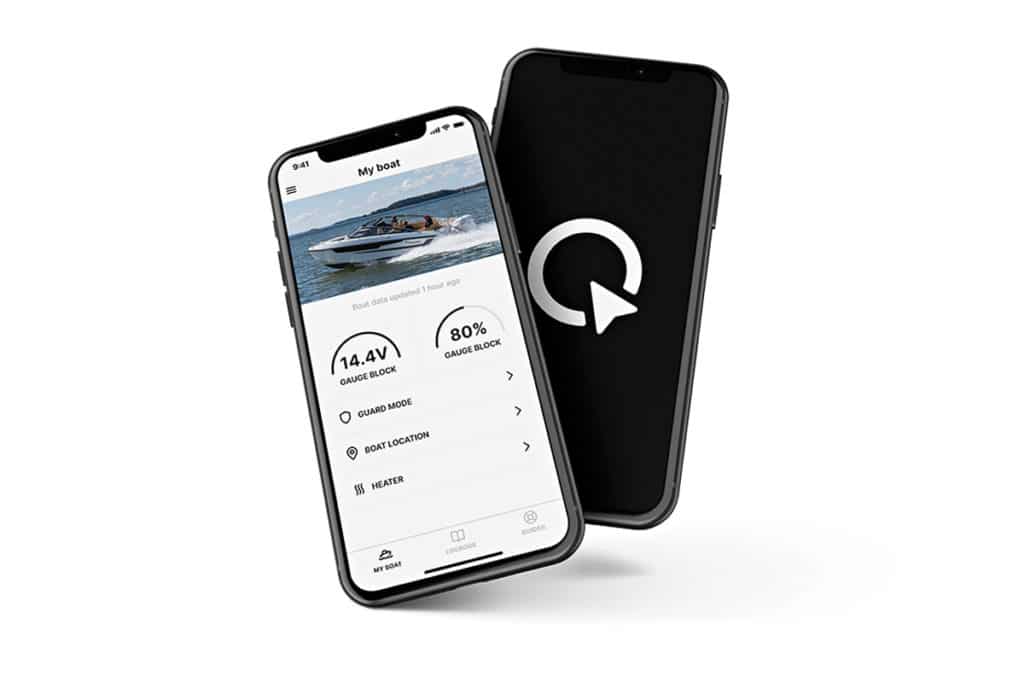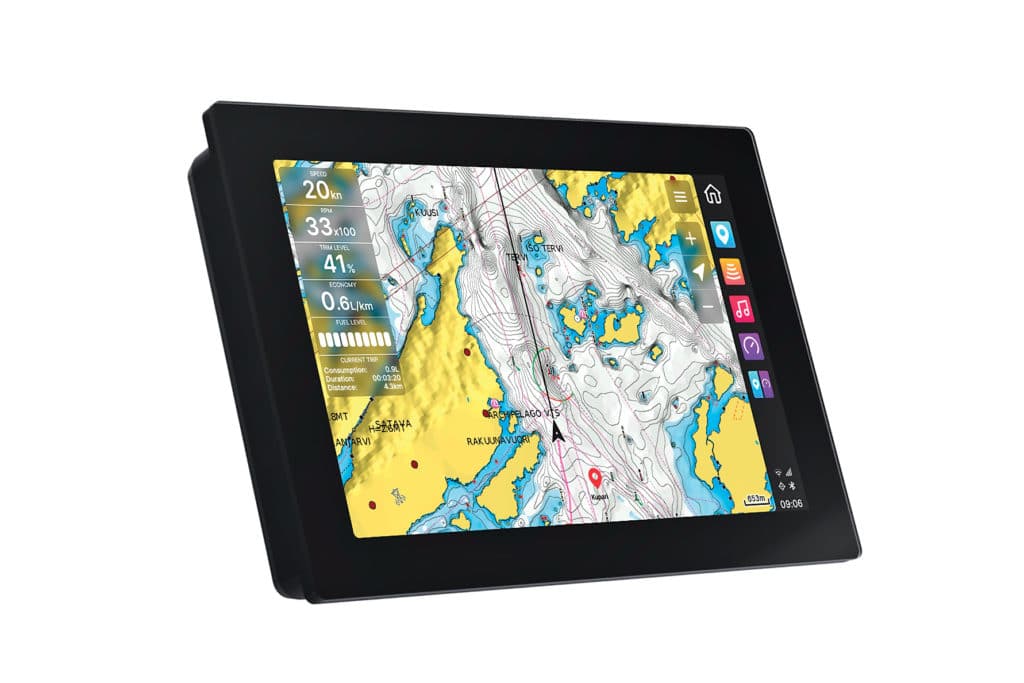
In Dr. No, the 1962 film based on Ian Fleming’s sixth novel about British spy James Bond, actor Desmond Llewelyn made the British secret-service armorer code-named “Q” famous. Q maintained the airs of a refined British butler while furnishing Agent 007 with innovative, stealthy and game-saving gadgets and weapons. All the bagpipe flamethrowers, cigarette darts and other inventions helped foster expectations for tradecraft devices that stretched the envelope.
If these expectations for constantly improving tech sound a bit like a computer geek’s enthusiasm for the latest operating-system update, you’re en route to understanding the Q Experience’s philosophy toward branded and white-label multifunction displays.
The first multifunction displays arrived in the mid-2000s, offering boaters the ability to control and display cartography and networked instrumentation on a single screen. As the technology matured and onboard networking improved, yachtsmen could soon overlay informational layers atop third-party applications (such as radar over cartography), control third-party instruments (including thermal-imaging cameras), collect and share bathymetric data, and in some cases, stream Netflix or control third-party drones.
Today’s marine marketplace has four established MFD manufacturers—Garmin, Furuno, Navico (parent company of Simrad and Lowrance) and Raymarine. The Q Experience, which draws its name from the Bond films, aspires to add its name to the list with from-the-ground-up hardware and a bespoke operating system that delivers integration, an automotive-style user interface, built-in entertainment, an anti-theft alarm, constant connectivity and a dedicated app.
Niklas Öhman and Johan Wessberg founded the Q Experience in Finland in 2015 following a conversation with a major European boatbuilder. The conversation unexpectedly veered toward MFDs, and the boatbuilders pondered how chart plotters might be done differently. Further conversations ensued, and Öhman and Wessberg agreed to create and build a ground-up MFD.

The result was the Q Display 1 series (Q1), which had a Linux-based operating system and was available in two screen sizes. Other features included two CAN buses, NMEA 2000 compatibility, radio, Bluetooth connectivity and a Wi-Fi hotspot.
“Our user interface’s logic is a mix between Apple’s iOS and Android. It shouldn’t take more than three screen taps to access any application,” says Öhman.
One small but telling example of the Q Experience’s smart user interface is the MFD’s menu page, says Patrik Gustafsson, the company’s product and sales manager. “If there’s no networked fish finder, you won’t see [one listed] in the menu,” he says.
Like other marine-electronics manufacturers, the Q Experience team uses automatic, over-the-air updates for software and operating systems. What’s different is the nature of the Q Experience’s updates. “Every year, [our customers] get a new plotter,” says Öhman, adding that the company releases updates during shoulder seasons, not midsummer. “If you look at our [user interface] from 2016 and now, they’re totally different.”
The Q Experience released its second-generation Q Display 2 series (Q2) in November 2020. It’s available in three screen sizes (10-inch, 16-inch and the double-wide 2-by-10-inch) and builds on the Q1’s capabilities. For example, while the Q2 has Q Experience software, N2K compatibility and optically bonded IPS screens, it also has a cleaner, more customizable user interface; faster (and dedicated) data and graphics processors; a more accurate GPS; two Ethernet ports; Navionics cartography; a built-in cellular modem; and a built-in amplifier for streaming music.

Q2 displays also use Q Experience’s mobile app, letting users monitor battery, bilge and fuel levels, receive warning messages from the boat, interact with the system’s built-in Q Boat Guard anti-theft alarm, and use an embedded N2K switch to control onboard systems via a mobile device. Q2 displays are always on, connected and gathering big data to share with the Q Experience and its partners, who refine the user experience.
Q2s are designed to operate much like automotive infotainment systems. “Navigation has to be easy, like in cars,” Gustafsson says, citing features such as the MFD’s dashboard, digital gauges and integrated (and customizable) widgets.
The Q2’s N2K switch gives users control of up to 20 networked devices; however, owners can add blocks (increments of 20), allowing operators to control more of their vessel using the Q mobile app. “We haven’t integrated with CZone or EmpirBus” digital-switching systems, he says. “We’ll keep our own switch for now.”
The Q mobile app also delivers vessel security via the Q2’s geofence-based Q Boat Guard anti-theft alarm, alerting owners if a boat escapes its slip. The system also allows users to watch their boat’s real-time use and share trip details with social media platforms.
The Q Experience has always sold Q1 displays as Q-branded products to consumers—or as OEM-level equipment to boatbuilders—and is following this same branded/white-label model with the Q2. “You don’t know the manufacturer of the display in [a] car because it’s a white-label product,” Öhman says. “We focus on branding [for] the boat’s manufacturer.”
The Q Experience has gained market interest, especially among Northern European boatbuilders. “In the Nordic countries, we have 35 to 40 percent of the [market] share of new boats,” Gustafsson says. “The volume is in powerboats, but I have one on my sailboat.”
While this is good news for the Q Experience, headwinds still exist for US customers. The Q2 employs an embedded cellular modem, which necessitates approval by the Federal Communications Commission. That approval is reportedly forthcoming, after which the Q Experience will need to establish US sales and support teams.
Still, if you like the idea of a Euro-built MFD that’s different from the other tech on your dock, check out the Q Experience. The eye-pleasing system might lack bagpipe flamethrowers and cigarette darts, but it includes the promise of a constantly evolving operating system and an ever-smoother user interface.









